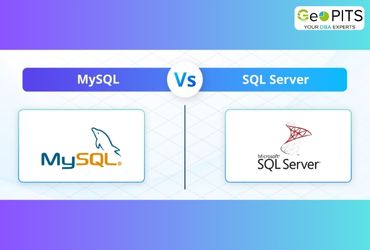When we hear the word “security”, we either think about physical locks or in terms of protection against cyber threats. These are the cornerstones that sustain our personal infrastructure. In a manner that’s eerily similar, all companies sustain their businesses through data. It goes without saying that hundreds of thousands of businesses rely heavily on databases, so much so that it’s what holds a company’s backbone straight. Its transactions, employee information, customer details, financial data — everything is stored in a database somewhere, and for obvious reasons, it’s paramount that it stays secure.
What Is Database Security?
By definition, database security is the set of actions or tools that, under the umbrella of information security, protects the confidentiality, integrity, and availability of a database. Database security can be broadly divided into two parts, namely physical and digital. Let’s understand them in detail.
Physical Security
When we say physical security, the most obvious thing that comes to mind is the datacentre with zerotrust architecture.

Protecting physical data is quite an elaborate venture. It requires one to manage its security by considering the geological activity and natural calamity frequency in the datacentre’s location, among other factors. Moreover, one must perform regular security audits, keep power backups and commit to live video surveillance, all the while maintaining entry logs.
Digital Security
When we talk about security controls on our networks and software, we are aiming at the digital security infrastructure of an institution.
For any database platform to achieve digital security with perfection, it’s important for them to double-check their database and backup encryption, its access privilege, password policies, in-built tools for monitoring, and firewall. Other database security best practices include actively looking for vulnerabilities and applying security patches, and committing to database normalization as a rule of thumb.
With this in mind, let’s take a look at the most important types of database security paradigms and how they are implemented.
Compliance
Compliance is one of the most important aspects of constituting a database protection solution. Most of the statutes and regulations provided with compliance norms tend to address very practical and very real pain points that demand attention.
Microsoft’s Azure SQL database is compliant with regulations such as PCI, HIPAA, and GDPR. But it doesn’t end there. Microsoft Azure, right out of the box, gives you an elaborate edge to database protection that includes all the tools necessary for protecting your data along with all the entry points which have access to it.
Access Control
With the primary aim to thaw potential threats from within the organization and prevent malicious attacks, access control is a much-needed feature in any database management infrastructure. By separating duties and execution needs, raising privileges according to user requirements can enforce damage control to a great degree. For instance, a tester may need access to the database, but not necessarily the actual data within it.
Every efficient database must offer solutions that separate tasks and regulate privileges. With that in mind, we can always count on Microsoft Azure security for its secure access control. Authentication is performed using the identities managed by Azure Active Directory, granting users the least privileges necessary for database access.
Microsoft also enforces row-level security based upon a user’s identity, role, or execution context, limiting sensitive data exposure.
Protection Against SQL Injection
Since the access to the database is through SQL commands, protection against SQL injection attacks is the most important database security paradigm that needs implementation. With a firewall in place, we should be able to block a predetermined set of SQLi commands, and if that’s not enough, we can implement our own set of policies as per the organization’s requirements.
Advanced Threat Protection offered by Microsoft for Azure SQL Database is highly capable when it comes to detecting anomalous activities. Your system can alert you whenever there’s some unusual behaviour or attempts to exploit your database.
Advanced Threat Protection actively looks for potential SQL injection, brute force SQL credentials, and access from unfamiliar locations, which only further strengthens the Azure SQL security.
Data Masking
Database administrators often need to hide certain information within a database while still being able to handle it, like a customer’s login password. Hence, there’s a need to hide such sensitive information. The aim of data masking is to do just that — scramble the data, making it unreadable when retrieved.
Data masking, broadly speaking, is of 2 types — static and dynamic. With dynamic data masking, you should still be able to view the format of the data in the database while the actual data remains obfuscated. On the other hand, static masking creates a duplicate of the entire database (with the actual data masked) for developers and testers. Microsoft offers both of them in its cloud database management system.

Dynamic data masking applies to all Azure SQL Database, Azure SQL Managed Instance, and Azure Synapse Analytics. With this, Microsoft SQL server security limits sensitive data exposure by masking it to non-privileged users.
It’s important to note here that SQL users are excluded from masking (administrator privileges required). Also, it’s possible to set your own rules, choosing designated fields, database schema, table, and column names. You can fully mask the data in a designated field or wherever the system detects an email address, or random numerical data, or any custom string.
Again, you obviously have the option to keep a separate sanitized copy of your database by putting static data masking to use whenever there’s a need to share it with non-production users.
Data Encryption
Within a database, information can be encrypted on different levels. For instance, you can encrypt an entire database, protecting it from misappropriation when, say, an unauthorized third party gains access to the data physically. Again, you can protect the database externally, securing all the endpoints when the data is being sent through the transport channel.
Microsoft takes every business’s database security requirements very seriously and offers a wide range of encryption options for businesses. There’s the option for encryption of data at rest, including data on a magnetic strip, disk, blob, or table storage. This feature is available for services across SaaS, PaaS, IaaS, and cloud models.
Client-side encryption is performed outside of Azure, and the cloud service providers don’t have encryption/decryption keys.
As for Server-side encryption, Azure offers you 3 models that you can choose as per your requirements. It includes service-managed keys, customer-managed keys, and service-managed keys in customer-controlled hardware.
You also have disk encryption using Windows BitLocker, Storage Service Encryption, Column-level encryption, Cosmos DB database encryption, TLS, RDP sessions, VPN encryption, and a lot more on the table when you choose Azure.
Final Thoughts
Having a fully managed secure database should be at the top of the priority table for any company, and that’s where Geo Platinum IT Services comes in. Whether it’s database consulting, support, or managed security services for MS SQL, Geo PITS offers its services tailored to your requirements so that you don’t have to worry about database administration or its security. With a balanced combination of a proven delivery model and years of experience managing databases, Geo PITS is the right choice when you go Cloud.




.jpg)


